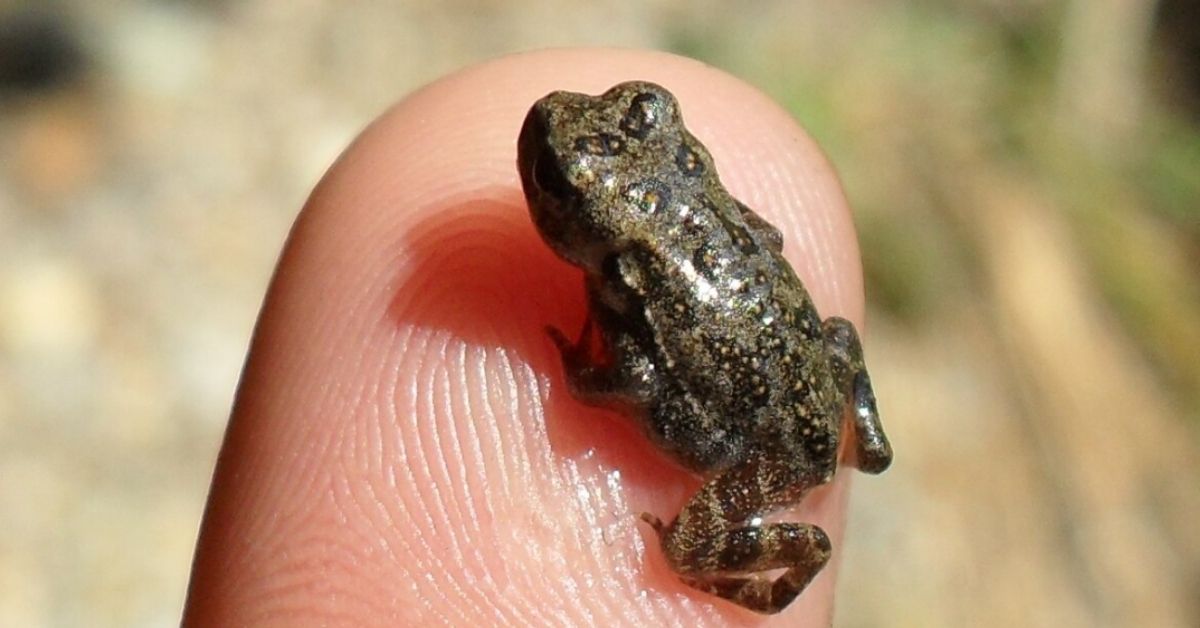Black-footed ferrets are North America’s only native ferret species and were thought to be extinct in 1979.
When the species was miraculously rediscovered in 1981 in Wyoming, these long, quirky mammals quickly rose to become the center of dedicated conservation efforts.

At that time, the Wyoming Game Department and U.S. Fish and Wildlife Services brought 18 ferrets into human care to begin cooperative breeding programs, like the one at the Smithsonian’s National Zoo and Conservation Biology Institute in Front Royal, Virginia.
Between captive breeding, wildlife reintroductions, habitat restoration, and even genetic cloning, one of the continent's most endangered mammals is now seeing a comeback.
Perhaps the cutest manifestation of this conservation work is a new litter, born at the NZCBI on May 11.

Since 1989, 1,218 black-footed ferret kits have been born at NZCBI, with 750 reintroduced to the wild. Currently, 48 ferrets live at NZCBI, including one-year-old female Aristides, who gave birth to the new litter of six kits last week.
Last breeding season, NZCBI raised 51 ferret kits. Now with 2024’s season underway, animal care staff are closely monitoring the ferrets’ behavior through the institute’s Black-Footed Ferret Cam (a temporary live webcam the public can also view on the NZCBI website).
According to a press release, the kits will nurse for about a month before beginning to sample their mom’s diet and eating meat. A couple months after that, the kits will separate from Aristides to undergo a genetic assessment by the Association of Zoos and Aquariums’ Saving Animals From Extinction (SAFE) program.

“This assessment will determine whether the kits will remain at NZCBI, transfer to another breeding facility, or join the USFWS pre-conditioning program in preparation for their release into the wild,” the press release explained.
“The pre-conditioning program allows ferrets to learn to live in burrows and show they can successfully catch prey before being reintroduced to the wild.”
Right now, the kits are still tiny, weighing less than 10 grams, with a thin layer of white fur covering their bodies. Their well-known mask-like markings and namesake dark feet will appear in the next few weeks. Then, they’ll start venturing out of their den and exploring the burrows of their habitat, akin to the tunnels they’d find in the wild.
The biggest threat for black-footed ferrets, scientists say, is habitat destruction, since much of the shortgrass prairie habitat that ferrets depend on has been plowed for crops across the continent.
Prairie dogs are also important to the survival of these ferrets, since they help create their underground habitats, and are the ferret’s main food source. However, they have also been on the decline because of habitat loss, making it difficult for ferrets to survive on their own in the wild.
“The life of the ferret has a lot of pressures out in the wild,” Adrienne Crosier, who heads the breeding program at the Smithsonian Conservation Biology Institute, told PBS last December.
“They absolutely have a critical role to helping maintain the balance of the ecosystem.”

Paul Marinari, the director of the USFWS’s Black-Footed Ferret Conservation Center in Colorado, told PBS that the wild population of these ferrets is precarious, but that he estimates there are between 300 and 400 black-footed ferrets living in the wild.
“They don’t live that long. They are very quick to produce offspring. They produce a fair number of offspring. That’s the simple version,” Marinari told PBS. “Saving the species is much more complex.”
Without being able to rely on prairie dogs for habitat maintenance and as a food source, breeding programs across the country are the main key to ensuring the future of the species.
The new litter at NZCBI is the second for Aristides, and the third for dad Thanos, a 2-year-old male who came to NZCBI from the Phoenix Zoo. Both parents received a breeding recommendation from the SAFE program.
“SAFE tracks the lineage of individual animals in a record called a ‘studbook.’ When considering which animals to breed, a studbook keeper examines the individuals’ genetic relatedness to one another, overall health and temperament, among other factors, and makes recommendations accordingly,” a press release explained.
“This matchmaking process helps ensure the genetic diversity of a population in human care.”
Additionally, breakthroughs in genetic cloning show a promising future recovery for the species.

In April, the USFWS announced the cloning of two black-footed ferrets from preserved tissue samples, the second and third ferret clones in history, following the birth of the first clone in December 2020.
Cloning is a tactic to preserve the health of species, as all living black-footed ferrets come from just seven wild-caught descendants. This means their genetic diversity is extremely limited and opens them up to greater risks of disease and genetic abnormalities.
One of the new clones, Antonia, was born at the NZCBI, just like this new litter (though, the six new kits came from traditional breeding methods).
While cloning is an exciting innovation, and breeding is vital to ensuring the future of the species, experts suggest that the best way anyone can help black-footed ferrets is by ensuring that they have a place to call home.
“We can save the black-footed ferret,” Marinari told PBS.
“Our thought, and all of our partners’ thought, is that we can save the other 130 unique plants and animals that are native to the North American prairie. It’s a pretty special ecosystem; one that’s often overlooked because of the riches we have in our country.”
Header image courtesy of Smithsonian's National Zoo and Conservation Biology Institute


